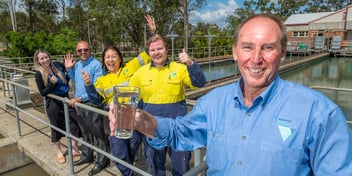Net-zero lessons: How NYCDEP is cutting emissions

While national governments across much of the world continue to hesitate and delay setting hard net-zero targets, many cities are taking up the torch for emissions reduction.
At Ozwater’22, Dr Beverly Stinson, AECOM’s Global Water Business Executive Vice President, shared how the New York City Department of Environmental Protection’s (NYCDEP) is cutting emissions from its 300 water treatment facilities.
Setting goals, cutting emissions
In 2019, NYCDEP set aggressive goals to cut their wastewater treatment emissions, with targets to reach 40% emissions reductions from the 2006 baseline by 2025, 50% emissions reductions by 2030, and 80% emissions reductions by 2050.
They set a target of energy-neutral wastewater treatment plants and carbon-neutrality across the agency by 2050, with an aim of 100 MW of solar PV capacity to be installed at New York City facilities by 2025.
Reviews of the initial progress of various renewable energy sources found incredibly promising signs from the shift to solar power, with a 12% reduction in greenhouse gas emissions.
Conversely, wind power only saw a 1.8% emissions reduction, which was well below what was required, as height restrictions due to their being located near La Guardia Airport meant they were unable to be built to the height required to be adequate.
The initial progress of hydropower generation showed some limited promise, however more is required to achieve the required outcomes.
Resource reuse
However, Dr Stinson said the NYCDEP had also found that progress cannot be taken for granted, with one study finding that the department had gone backwards in biosolids use since 2006, with the amount of the resource being disposed of in landfill climbing.
This backwards step also became the trigger for one of the most impactful changes NYCDEP has made, by reviewing its approach to biosolids management and achieving non-landfill use, including by harnessing the ability to transfer biosolids as far as Colorado for sequestration.
Having an impact
Dr Stinson noted the cynicism many delegates would be feeling to the pledges of various national governments to reach their commitment to limit warming to 1.5 degrees Celsius by 2030, given that they produce twice the amount of fossil fuels than would be consistent with reaching that target.
She said that while wastewater treatment was a smaller source of emissions than transportation or energy generation, it nonetheless was among the more controllable and so could effectively be low-hanging fruit as an area for cities to cut emissions.



